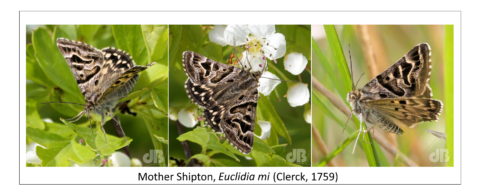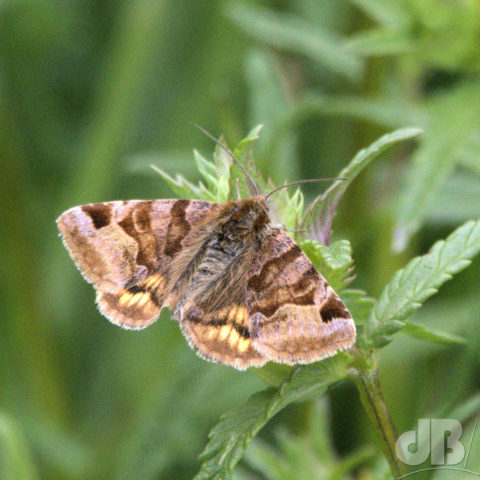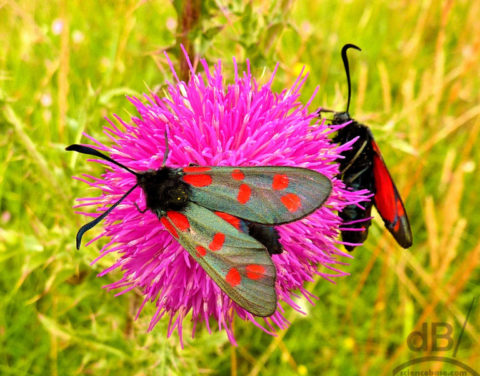I have been photographing and reading about moths in detail only since late July 2018, I reported on my first year of mothing here. In that time, I have seen well over 400 and photographed as many. They are such a diverse group of insects with marvellous patterns. They come in all shapes and sizes and as I have mentioned before, the butterflies are simply a grouping within the moths, Lepidoptera. Their many names are something of a wonder too.

Some moths have more than a passing resemblance in terms of shape and habit. Take the Mother Shipton an the Burnet Companion. Now, I’ve seen these in wildflower meadows quite a lot so far this year. The Mother Shipton famously has patterning on its forewing that is reminiscent of a caricature of the legendary 16th Century witch Mother Shipton (purportedly a woman named Ursula Southeil, although it was only many decades after her death that the legend of her fortune-telling and ugliness were invented.

Now, in the mothing books, Mother Shipton is often placed on the same page as Burnet Companion. They are very similar in shape, size, and habit but with a rather different scaly patterning of their wings. You would imagine that taxonomically and genetically they have to be closely related, and presumably they are. And, indeed, Mother Shipton’s scientific name is Euclidia mi (Clerck, 1759) and Burnet Companion is Euclidia glyphica (Linnaeus, 1758). So, they are in the same genus, although originally Mother Shipton was in a different genus Calistege…which seemed odd, given how obviously similar it is to Burnet Companion.

Incidentally, the Burnet Companion is so-called because it frequents the same environment as the Burnet moths (Zygaena species) although strangely its flying times are reported as not overlapping as much you might imagine so “companion” is perhaps a little misplaced as a name.
Pretty much all of my curated moth photos are in a cluster of galleries over on my Imaging Storm website, under the banner Mothematics.